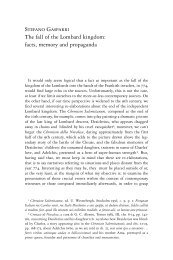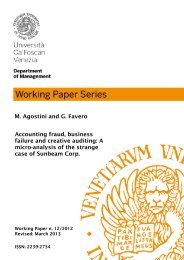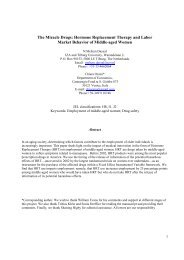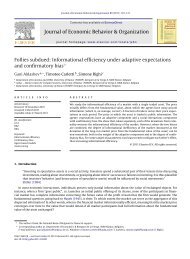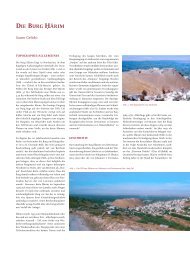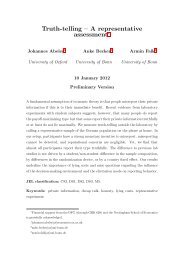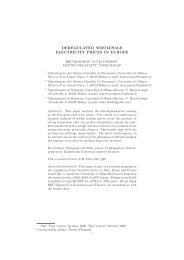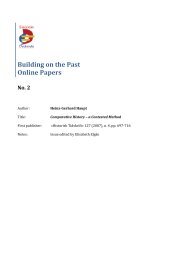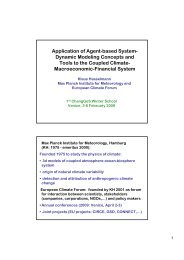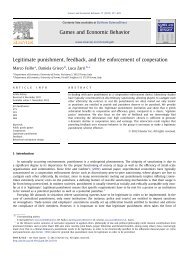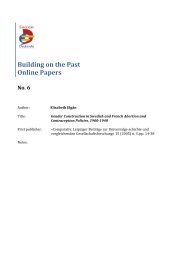The pilot area of Auronzo di Cadore (Belluno) - Università Ca
The pilot area of Auronzo di Cadore (Belluno) - Università Ca
The pilot area of Auronzo di Cadore (Belluno) - Università Ca
Create successful ePaper yourself
Turn your PDF publications into a flip-book with our unique Google optimized e-Paper software.
Preface<br />
<strong>The</strong> mountain <strong>area</strong> <strong>of</strong> the Veneto Region covers a third <strong>of</strong> its entire surface.<br />
Here the importance <strong>of</strong> tourism, and especially winter tourism, has<br />
grown constantly in time, making it a primary source <strong>of</strong> alpine wealth<br />
and a driver for the regional economy. However, in the last decade, <strong>di</strong>fferent<br />
stu<strong>di</strong>es have highlighted a phase <strong>of</strong> stagnation for what concerns<br />
tourist fluxes, partly due to a lower attractiveness <strong>of</strong> the mountain tourism<br />
<strong>of</strong>fer. This might depend on <strong>di</strong>fferent social and economic factors,<br />
but also on the impacts <strong>of</strong> climate change, whose occurrence makes it<br />
<strong>di</strong>fficult to secure a sufficient snow cover throughout the entire winter<br />
season, particularly at lower elevations.<br />
In this context, the project ClimAlpTour (Climate change and its impacts<br />
on tourism in the Alps), funded by the European Union as part <strong>of</strong> the<br />
Alpine Space Programme 2007 – 2013 and led by the Veneto Region,<br />
analysed one <strong>of</strong> today’s most burning issues: the impacts <strong>of</strong> climate<br />
change on tourism in the Alpine arc with particular focus on the economic,<br />
social and environmental factors related to both summer and<br />
winter activities.<br />
<strong>The</strong> Alpine arc is characterised by both a highly heterogeneous landscape<br />
and very <strong>di</strong>ssimilar climatic con<strong>di</strong>tions, which shape the region’s<br />
overall richness in terms <strong>of</strong> ecosystems and habitats. Thus, climate<br />
change does not affect this territory homogeneously. <strong>The</strong> partnership<br />
<strong>of</strong> the ClimAlpTour project, in its attempt to cover this <strong>di</strong>versity, lists<br />
representatives <strong>of</strong> the entire Alpine region inclu<strong>di</strong>ng institutions from<br />
Italy (Veneto, Piedmont, Aosta Valley, Lombardy, Autonomous Province<br />
<strong>of</strong> Bolzano), Austria (Vienna and Tirol), France (Rhone Alpes), Germany<br />
(Bavaria), Slovenia, and Switzerland.<br />
Such comprehensiveness and the involvement <strong>of</strong> several local institutions<br />
through whose collaboration partners were able to analyse issues<br />
and peculiarities <strong>of</strong> tourism in these <strong>area</strong>s. <strong>The</strong> project revolved around<br />
the analysis <strong>of</strong> several <strong>pilot</strong> sites, which alpine were considered by experts<br />
to possess particularly significant and representative tourist and<br />
environmental con<strong>di</strong>tions. <strong>The</strong> initial surveyed data included climatic<br />
data, market data, and other economic and social parameters.




